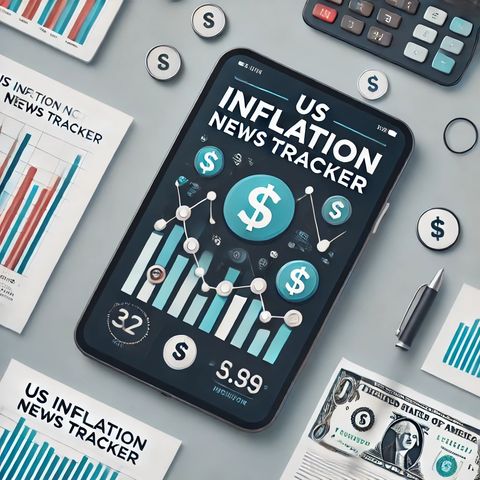"Tackling Grocery Inflation: Strategies for Former President Trump to Curb Rising Prices"

Download and listen anywhere
Download your favorite episodes and enjoy them, wherever you are! Sign up or log in now to access offline listening.
"Tackling Grocery Inflation: Strategies for Former President Trump to Curb Rising Prices"
This is an automatically generated transcript. Please note that complete accuracy is not guaranteed.
Description
During President Joe Biden's tenure, grocery prices have surged over 25%, sparking a nationwide discussion on how to best manage inflation's grip on the American economy. This escalation in food...
show moreSeveral factors contribute to the current inflationary trend, including supply chain disruptions, labor shortages, and increased demand post-pandemic. Experts suggest a multi-faceted approach to tackling the situation, with initiatives Trump could consider if given another opportunity to influence economic policy.
First, addressing supply chain bottlenecks remains crucial. Streamlining logistics and expanding domestic production capabilities could alleviate pressure points in the supply chain that contribute to price hikes. Former President Trump could focus on incentivizing businesses to rebuild and relocate supply chains within the United States, reducing dependency on foreign imports that can be vulnerable to global disruptions.
Moreover, comprehensive agricultural policy reforms may help stabilize food prices. By supporting technological advancements in agriculture and offering financial incentives for farms implementing sustainable practices, the government could boost production efficiency. This would potentially lower operational costs for farmers, translating into more affordable prices for consumers.
Another approach involves reducing energy costs that impact food production and transportation. Former President Trump could reinstate measures to increase domestic energy production, such as reviving oil exploration and expanding renewable energy projects. Lower energy prices would decrease operational expenses for food producers, contributing to reduced grocery costs.
Additionally, revisiting tariffs and trade agreements might play a pivotal role. Trump's past administration was marked by imposing tariffs, which increased costs for food imports and goods dependent on foreign materials. Restructuring these tariffs or renegotiating trade deals could help lower costs and foster healthy competition, benefiting consumers.
Furthermore, experts suggest that addressing labor shortages in the agriculture and food sectors could help mitigate price increases. Implementing effective immigration policies that provide a steady workforce for these industries, alongside vocational training programs, could enhance productivity and stability within the sector.
Lastly, broader fiscal and monetary policies must be synchronized to control inflation. By balancing interest rates and government spending, the Federal Reserve and the administration could work in tandem to stabilize the economy. If Trump were to prioritize a sound monetary policy, it could serve as a foundation for controlling inflation over the long term.
In summary, while food prices have undoubtedly soared during the Biden administration, various strategies could potentially curb inflation. Former President Donald Trump, if given the opportunity, might consider these approaches to manage and reduce grocery prices. A combination of enhancing supply chain resilience, agricultural reforms, energy cost reduction, tariff restructuring, labor force stabilization, and synchronized fiscal policies could form the basis of a comprehensive plan to address inflationary pressures in the grocery sector.
Information
| Author | QP-4 |
| Organization | William Corbin |
| Website | - |
| Tags |
Copyright 2024 - Spreaker Inc. an iHeartMedia Company
